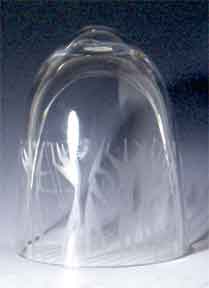18th Century
Earliest among the collection are religious in themes and composed of 18th century icons and images created by local artisans under the tutelage of the friars. The devotional pieces of the collection are of outstanding significance.
" Coronation of the virgin'
19th Century
During the late Spanish colonial period, the school of Academism or “salon” painting emerged and produced the likes of Juan N. Luna and Felix Resurreccion Hidalgo, who are now considered as 19th century masters.
"Spolarium"
1900s
In the succeeding American period, Fernando C. Amorsolo, who was later declared as the First National Artist, rose into fame and established his own style or “school” which was largely characterized by countryside scenery with golden sunlight.
"La Descension de Jesus"
1920s
The period is represented by the proliferation of genre themes, landscapes and still lifes as well as the emergence of pre-modernism.
"Bust of Mons. G. Aglipay"
1930s: Pre-modernism
Artists represented in the collection: Victorio Edades, Diosdado Lorenzo, Galo Ocampo, Carlos Francisco, Gabriel Custodio, Vicente Manansala, Ricarte Purruganan, Romeo Tabuena, and others.
1942-1945
A suspension on artistic activity was prevalent during the Japanese occupation. However, some visual artists still managed to produce artworks based on the atrocities brought by the war.
Artists represented in the collection: Dominador Castañeda, Demetrio Diego, Diosdado Lorenzo, Romeo Tabuena, Gene Cabrera and others
1946-1949
After the Japanese occupation, the art community sprang back to life. Various themes and styles were explored and pioneered by Filipino artists who gained experience abroad.
"Burning of Sto. Domingo"
Mural painting emerged, spearheaded by Carlos Francisco. Art Association of the Philippines (AAP) was established in 1948.
1950s
The Philippine Art Gallery (PAG) was founded with young modernists as the leading figures. Emergence of different schools of thought (e.g. school of Botong Francisco, school of Manansala, emergence of the “Mabini” art group).
""Harana in Manila"
1960s
Modern art reached its peak.
"Ink Fish"
1970s
Most of the artists in the 1960’s continued to produce important works in this period. Emergence of different movements such as People’s Art or Art for the Masses, Protest Art, Social Realism, and the institutionalization of the National Artist Award (1972). 11 National Artists whose works are represented in the collection:
"Hills of Nikko"
The period is characterized by a revival of traditional art and ethnic art. Contemporary sculpture became an integral part of buildings and parks.
1990s
New generation of painters, sculptors and printmakers expressing their personal feelings and expressions emerged. Great art movement in Europe and the Americas gained entry to the local scene such as installation art and experimental art. Galleries and museums were institutionalized spearheading activities in the cultural scene.
2000 to present
Philippine art has come a long way, from the primitive ingenuity of the Filipinos to the present avante-garde artists exploring all possible techniques and schools ranging from the traditionalists, representationalists, abstractionists, abstract expressionists, semi-abstractionists, figurative expressionists, non-objectivists and other forms of -isms.







